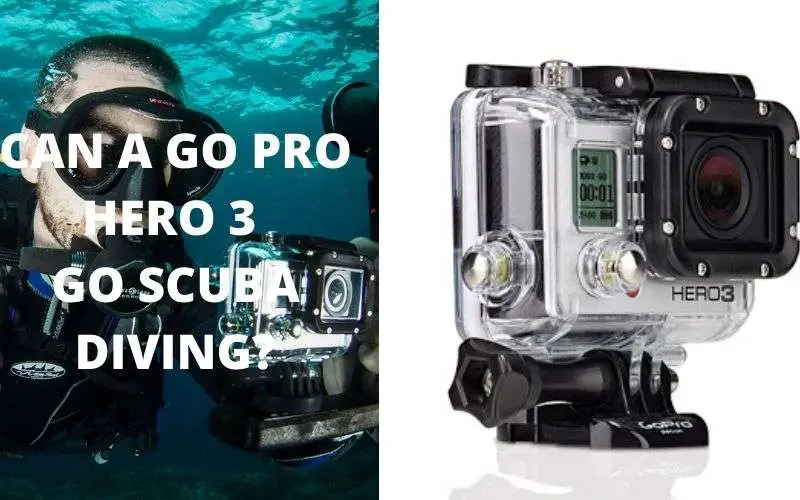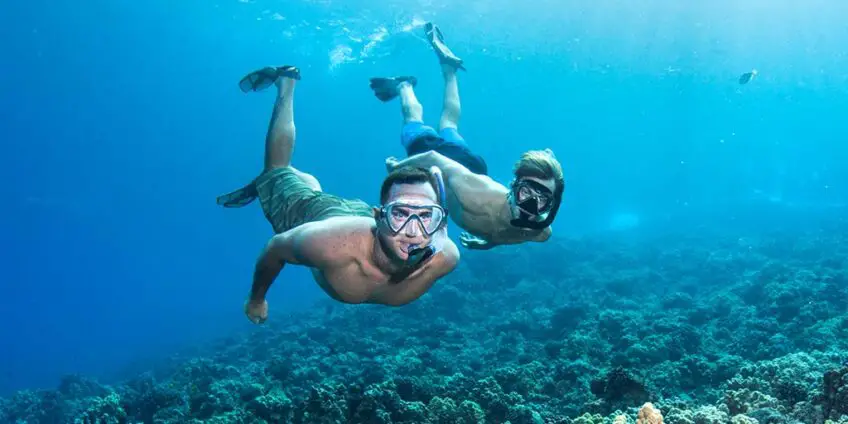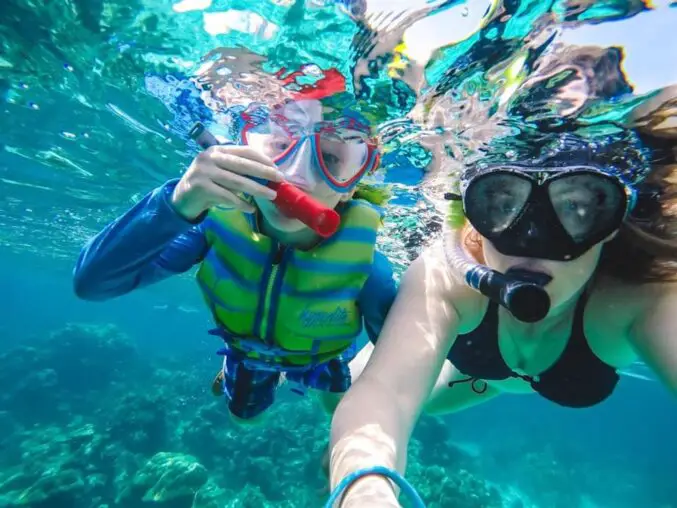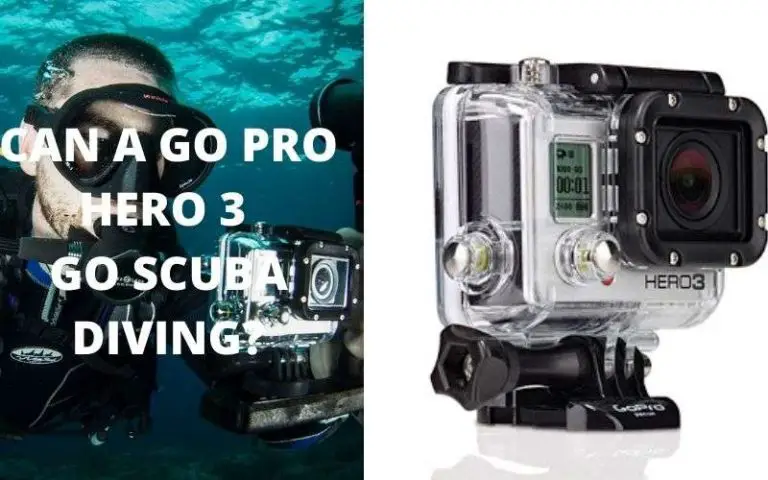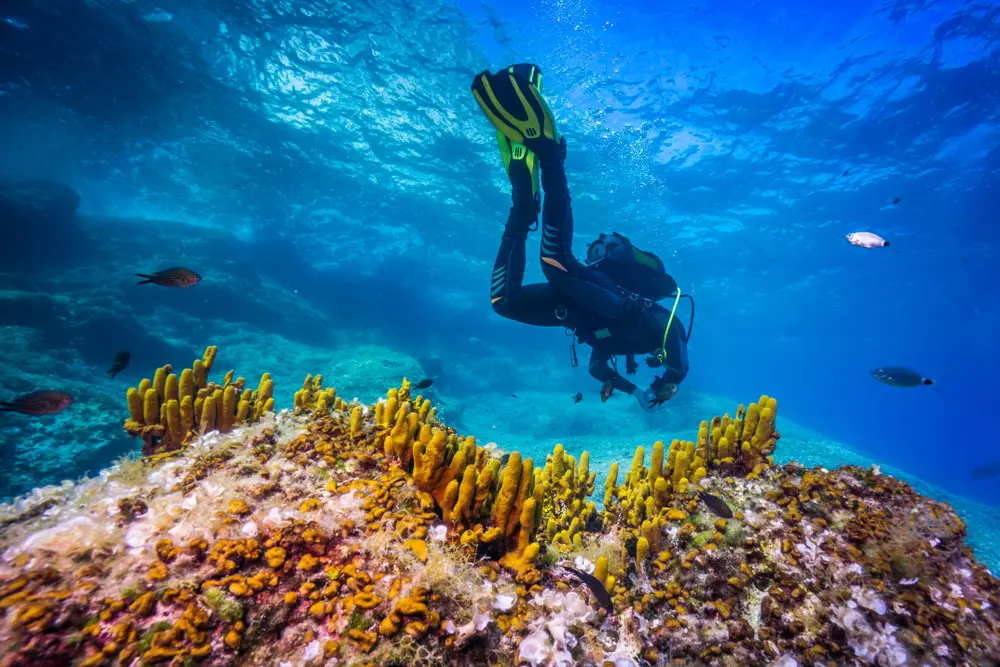
The allure of the underwater world has always captivated adventurous souls, beckoning them to explore its mysteries. The concept of snorkeling, with its simplicity and accessibility, has been a gateway for many to get a glimpse of this hidden realm.
However, a question has lingered in the minds of enthusiasts: how deep can you snorkel underwater? Can a lengthy snorkel tube replace SCUBA gear, allowing us to delve as deep as the seasoned divers?
In this comprehensive exploration, we will dissect the science behind snorkeling depths, unveil the secrets of breath-holding, dive into the dangers of underwater exploration, and empower you to maximize your snorkeling experience.
The Limits of Snorkeling Depth

Before we dive into the intricacies of snorkeling depth, it’s essential to understand why most snorkels are only about 12-15 inches long. These modest dimensions are not arbitrary; they are carefully designed to ensure the safety and comfort of snorkelers.
Venturing deeper into the underwater world using an extended snorkel tube is fraught with challenges. First, the practicality of a long tube comes into question – it could easily break or get entangled with underwater obstacles. Second, water pressure presents a significant hurdle. Beyond approximately 1.5 feet deep (18 inches), trying to inhale through the snorkel becomes akin to sucking air through a clogged straw. It’s uncomfortable and inefficient.
The issue of stale air further complicates deep snorkeling. Each exhalation releases carbon dioxide, which may not fully dissipate from the tube. Over time, this buildup results in a less oxygen-rich mixture, approaching dangerous levels of carbon dioxide. Snorkeling too deep eventually feels like asphyxiation because, in essence, it is.
Snorkeling at significant depths is impractical and potentially perilous. The answer to exploring the depths lies not in extending the snorkel but in mastering breath-holding techniques and diving deeper to experience the underwater wonders.
Maximizing Your Snorkeling Experience
Rather than futile attempts to snorkel at great depths, focus on enhancing your snorkeling experience by perfecting the art of duck diving. Duck diving entails holding your breath and submerging yourself briefly underwater, enabling you to become an active explorer rather than a passive observer.
You don’t need to breathe underwater to unlock the full potential of your snorkeling adventures. By improving your duck diving skills, you can explore underwater destinations without limitations.
In the following sections, we will delve into breath-holding and duck diving fundamentals, navigate the potential dangers lurking below, and guide you on conquering your fears, ensuring safe and enriching snorkeling escapades.
Understanding Duck Diving
Duck diving is a skill employed in relatively shallow waters, typically around 10-15 meters deep, and is generally considered safe when executed correctly.
In contrast, free diving, where divers attempt to reach maximum depths in a single breath, is a far more perilous endeavor and is usually reserved for professional competitions. Both these activities, however, carry the risk of drowning, especially for inexperienced divers.
Common Dangers of Duck Diving
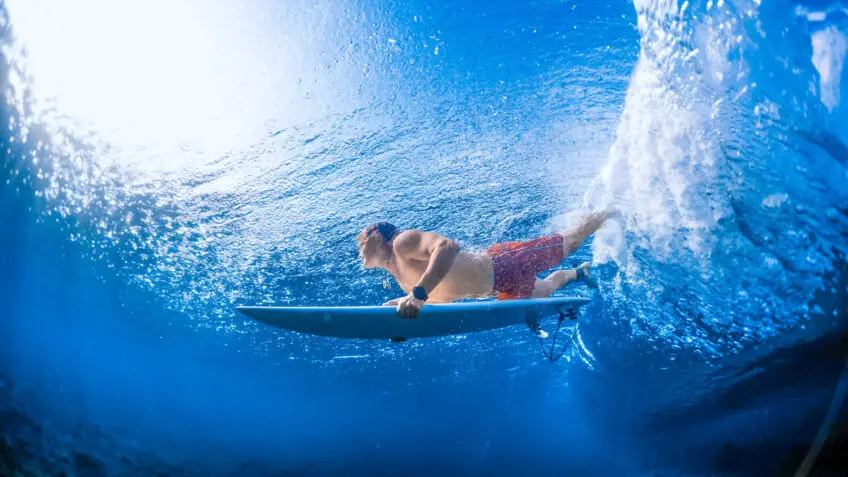
Panic
Novice divers may experience a sudden urge to breathe and panic when they realize they didn’t account for the ascent back to the surface. Staying calm is crucial in conserving energy and maintaining the right mindset for safe diving.
Ear Barotrauma
Equalizing the pressure in your ears as you descend is vital to prevent middle ear barotrauma. If unable to equalize underwater, resurface and clear your ears safely to avoid injury.
Shallow Water Blackouts
Rapid, repetitive dives with insufficient rest intervals can lead to shallow water blackout, a potentially life-threatening condition. Adhere to the rule that your rest periods should be at least twice as long as your dive time.
Boat Traffic
Surfacing hastily can be dangerous due to potential boat traffic. Using a dive flag to signal your presence underwater or carefully scanning your surroundings before ascending is critical for safety.
Ego
Resist the temptation to push your limits and aim for personal bests on every dive. Deep diving requires longer ascent times, and recklessness can lead to dangerous situations.
Breath-Holding Techniques
Before mastering duck diving, you must develop the ability to hold your breath underwater effectively. Understanding your body’s response to oxygen deprivation is essential, and these exercises can help you progress:
Holding Your Breath
Start by holding your breath underwater for as long as possible. Aim for a goal of 60 seconds, though initial attempts may range between 20-40 seconds. Practice and acclimatization will lead to improvement.
Breath-Holding Exercise
Take five deep breaths, holding each for three seconds before exhaling. This technique maximizes oxygen storage in your bloodstream and large muscles, significantly enhancing your breath-holding capabilities.
Measuring Your Heart Rate
Monitoring your heart rate is crucial for gauging your readiness to dive. A calm heart rate allows for extended breath-holding, making it essential for safe underwater exploration. Follow these steps:
- Locate your pulse by placing your middle and index fingers on your neck.
- Count the number of pulses in six seconds and multiply by ten to calculate your beats per minute (BPM).
- Snorkel divers should aim to keep their BPM below 110 while diving to ensure prolonged breath-holding capabilities.
Efficient Swimming Underwater
Efficiency is paramount when swimming underwater, as unnecessary exertion consumes oxygen rapidly. Skilled snorkel divers have learned to move effortlessly, conserving precious air and enhancing their exploration capabilities.
Conserving Oxygen
Staying calm and relaxed underwater helps maintain a low heart rate, conserving oxygen. Muscles can perform a small amount of work without oxygen (anaerobic), but this energy reservoir depletes quickly. Resting for twice the duration of your dive is essential for recovery.
Swimming Efficiently
Utilize your arms and legs initially to descend, then switch to slow, controlled leg kicks. Maintain horizontal body balance and release some air to reduce buoyancy at your desired depth. Short snorkeling fins amplify the power of your kicks, propelling you further with less effort.
Diving With a Snorkel – Is It Possible?
Casual snorkelers generally explore depths of 10-15 meters, a range within the operational capacity of most underwater cameras designed for snorkeling. With additional training and practice, some may extend their range to 25-30 meters, setting new personal records.
Beyond this depth, experienced divers, equipped with anchor ropes, may reach greater depths, but it necessitates exceptional breath-holding skills.
Hyperventilating, a risky technique that suppresses the urge to breathe, should be approached with caution, as it can lead to oxygen depletion and unconsciousness. Listening to your body’s signals, such as cramps, headaches, fatigue, and dizziness, is crucial. Progress often requires several practice dives to acclimate your body to the demands of deep snorkeling.
Overcoming Common Diving Fears
Fear can be a significant barrier to realizing your snorkeling potential. Understanding the realities of common fears associated with underwater exploration can help you conquer them:
Sharks
The portrayal of sharks as menacing predators is largely a misconception. Shark encounters are rare, and they are cautious around humans. Remain calm, avoid bleeding, and sharks are more likely to swim away from you.
Other Sea Creatures
Depending on your location, you may encounter other potentially frightening marine life, such as poisonous snakes and fishes. It’s important to remember that these creatures are generally wary of humans and are not natural predators. Wearing appropriate protective gear, such as a full wetsuit, can offer additional peace of mind.
Tangled in Seaweed
The fear of getting entangled in seaweed is highly unlikely. Seaweeds are typically slimy and tend to slip off. The seabed would have to be densely overgrown for this scenario to become a concern, making it an unrealistic fear for most snorkelers.
Fear of Drowning/Lack of Oxygen
The sensation of not being able to breathe underwater can trigger panic and elevate your heart rate. Overcoming this fear requires practice and gradual exposure to deeper depths. Confidence in your breath-holding abilities will gradually reduce anxiety.
Conclusion
The depth to which you can snorkel using a long tube is limited to around 1.5 to 2 feet at most. Snorkels are not designed for deep submersion due to the inefficiency of air transfer and the risk of carbon dioxide buildup. Instead, the key to exploring underwater wonders lies in perfecting breath-holding techniques and gradually diving deeper.
For most snorkelers, a depth of a few meters up to about ten meters is sufficient to discover the beauty beneath the waves. Delving deeper requires extensive training and breath-holding skills, and the risk of drowning increases as you push your limits. Always prioritize safety, listen to your body’s signals, and never let your ego push you beyond your capabilities.
Snorkeling is a gateway to the mesmerizing underwater world, a realm waiting to be explored. By understanding its limitations, mastering breath control, and overcoming common fears, you can embark on a journey of underwater discovery that is as safe as it is exhilarating. So, take a deep breath, dive into the depths, and let the ocean unveil its secrets as you become one with its wonders.




